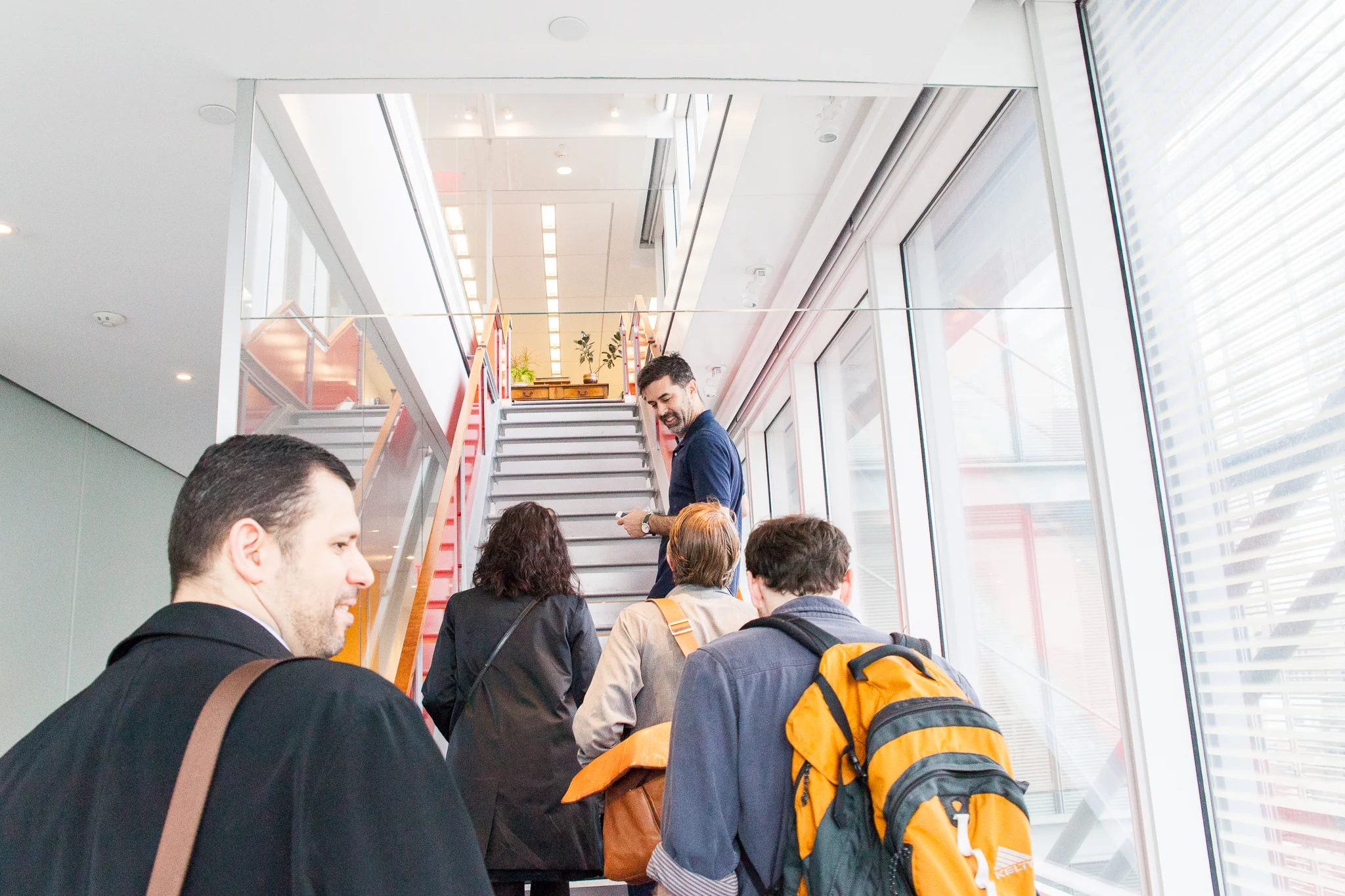I had big dreams when I was a kid. Didn't we all? I had visions of myself as a fast-paced, jet-setting journalist, bouncing in and out of my tiny NYC apartment (I mean I was a fairly realistic kid) to photograph stories for the New York Times. At some point though I recognized that photojournalism is more than a career, but a lifestyle, and though it is one that I respect very much, I was already on a different path. I knew whichever life I let envelop me, it had to be one that allowed me to indulge in the millions of creative projects and ideas that emerge from my own stories. That decision ended up being the right one as I am doing exactly that and couldn't imagine it any other way. I even consider myself somewhat of a casual journalist, as my work allows me to meet, explore and document the magic in everyday people and environments... like say, the New York Times offices!
Last month I had the pleasure of joining AIGA NY to photograph an exclusive tour of the New York Times offices led by their whip smart digital design team. Throughout Spring 2016, AIGA NY has hosted a series of intimate tours of NYC's most enviable design studios. The series is open to a small group of their higher level members, allowing the tours to go beyond a peek into the spaces and become a truly personal experience. I most enjoyed seeing all the historical artifacts from the Time's 164 year lifespan throughout the space, such as the metal type from the newspaper press, photography from the archives, and a whole slew of art made for and inspired by the paper. Scroll through the images below for your own virtual tour of my favorite parts of their Renzo Piano designed offices including said marvelous relics from NYT history, a leather-clad executive board room, and room notations featuring photos from the archives as well as rooms dedicated to journalists who died on duty.
The last few images of the screens on the orange wall are from a permanent installation in the lobby of the New York Times Building called Moveable Type by Ben Ruben and Mark Hansen. The piece takes phrases, statistics, web search terms and comments, and other data from the NYT database and presents them based on pre-programmed algorithms. The very last picture is a selfie of me outside with some taxis.











































